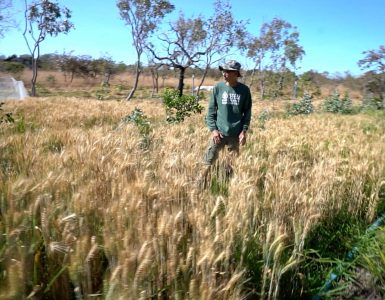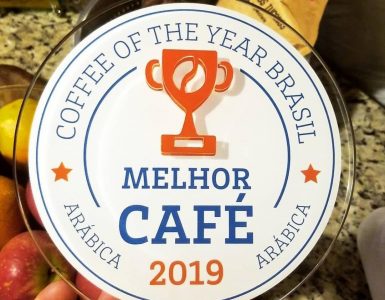Throughout history, gardens have always been present as a witness of the cultural, economic and religious scenario of a society. The gardens of antiquity were set up inside or around palaces, in flat areas or platforms, with fruits, vegetables, and flowers grown for food and also for the ritual celebrations. According to historians, the Egyptian gardens were implanted about 4,000 years ago and were oriented according to the cardinal points. They were characterized by straight lines and geometric symmetrical shapes and heavily influenced by astrology and belief in gods. Among the cultivated plants there were fruits, palm trees, papyrus, and lotus flower. The most famous gardens of antiquity were the Hanging Gardens of Babylon (605-652 BC), built by King Nebuchadnezzar as an offer to his wife. This garden was considered one of the seven wonders of the ancient world because it represented a daring work of engineering.
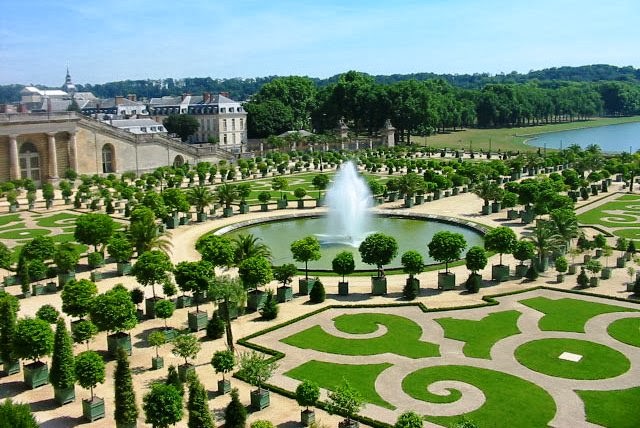
For many people, the word “garden” is related to images of the Palace of Versailles in France, for example. But the forest gardens are quite different from the cubism of the classical gardens. They are forests built by the human being, using the audacious engineering of Syntropic Farming that seeks to unite the beauty of a natural forest with useful plants, in small or large scale. If we could go back to the ancient world and visit its tropical, subtropical, boreal forests at that moment … we would see the Egyptian gardens and the gardens of Babylon with other eyes: like bean seeds growing on wet cotton, a kindergarten children’s playful experience.
Ernst Götsch's Syntropic Farming and the concept of forest gardens
For more than 40 years, Ernst Götsch has been building and teaching hundreds of food forests, real forest gardens, true wonders, and without war, or as Ernst himself says: peace farming. We don’t need to make war on insects, fungi, or bacteria, because they are not our enemies. In fact, all the beings coevolved with the forests, are part of it, and appear to pave the way towards the forests. One of the principles created by Ernst – and, in my view, the most difficult to be internalized – concerns especially these beings. When we visit our forest gardens and see these beings working, before any desire to sweep them off the map, to use insecticides, fungicides etc, it is fundamental to ask what each being is doing well, because they know what they are doing for thousands of years and therefore built deep connections with one another, and with the environment.
We can also ask what are plants and animals plans for a place. As an example, I can cite my experience working in the Cerrado. I have been planting for three years in a very degraded area, with compacted soils and termite nests everywhere. Neither brachiaria (Brachiaria decumbens) or melosos (Melinis minutiflora) grow there. In these soils, I have been planting many trees, and I have realized that termites are true inspectors of my crops. When I concentrate the existing resource (grass leaves and pruning of trees and shrubs that can grow here), these small niches created improve fertility thanks to the mulch and soil protection, which conserves water, fundamental to solubilize the nutrients released by organic matter accumulated by us. With this, the termites leave my plantation in peace, because I am in the flow of making life prosper. If I neglect, for example, the mulch, the termites chew on our cultivated tree barks. Funny though, termites and I are doing the same process of concentrating resources, since the soil fertility is visible around termite mounds, where grass clumps grow larger and greener. Recently we did an experiment with wheat, sown together with Andropogon grass and mombaça.
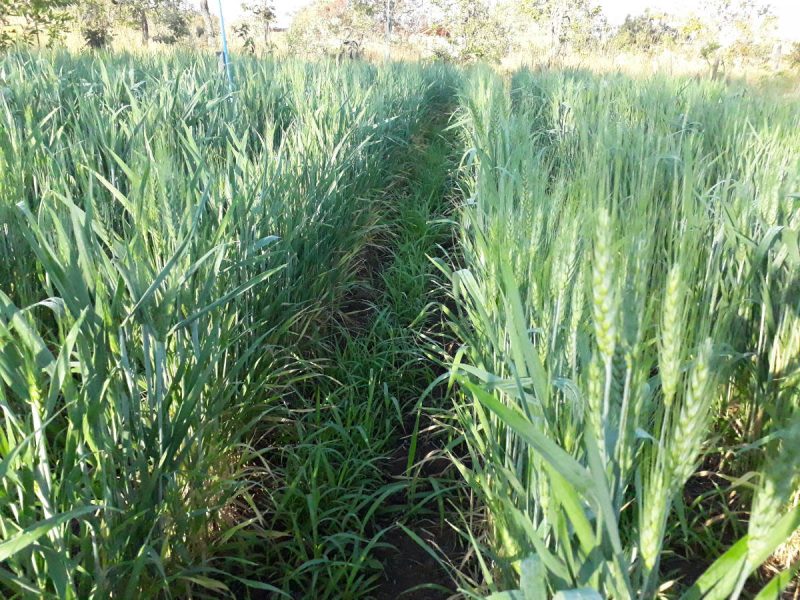
In the area we planted wheat, we dismantled a huge termite nest. Precisely in that spot we saw growing the most beautiful wheat plants, with leaves reaching almost twice the size of the rest, and presenting a darker green color at the point of filling the grains. When we abandon the paradigm of death and destruction and work to make life prosper, all beings contribute to our success, for our success is their success and vice versa.

I wonder how simple that can be today. In the image below that depicts one of the works of Ernst Götsch, you can see the vigor and vitality of the plants. What used to be an organic monoculture of citrus that received 57 sprayings of mixtures annually to control diseases and insects, is now transformed. Small changes, big transformations. Ernst planted eucalyptus as emergent, mombassa grass as a low/medium layer and banana to compose this new landscape with the citrus. If we contemplate a syntropic area, its beauty surpasses the monotony of a monoculture. From the synergy of this combination comes the elegance. A forest garden emerges, and when we understand it, we are immediately taken by the desire to have and see such a garden every morning.

There I was, once again, copying a recipe. Two years ago I planted the consortium of this image. The result: the Mombasa did not establish itself, because it requires much more fertile soils than the ones I have in my region. I could have planted andropogon, a cespitous grass, that grows similar to Mombasa, abundant along the side of highways here. But I was inebriated with that pictured I dreamed of. The same happened to the banana, which is dying from lack of water, low soil fertility and excessive winds. The reality here had its peculiarities. The soil is still compacted because I decided to plant an area much larger than the one I could manually unpack. Of the varieties of citrus that I have planted only the lemon (variety Tahiti) is doing reasonably well.
Reflecting a little more, I began to think: where does each plant that composes this landscape come from? What’s your origin? Eucalyptus comes from Australia, the orange comes from China, the Mombasa is from Africa and the banana is a pantropical species. Combining these plants into consortia does not mean just planting them nearby. As Ernst says: 5% of the effort is in implementation and 95% in the system’s management. I discovered with my friend Juã Pereira that, in order to make the citrus thrive, I should have pruned the bananas drastically since the beginning. Or rather, I should not have planted bananas in a place so dry and early in the system, with still poor soils. I should also have pruned eucalyptus more drastically and frequently to help citrus grow better. This mix of plants from different biomes, from different continents, is the key to build our forest gardens. But it is fundamental to know them well, the place we want to put them and, above all, we must know how to handle our agroforestry. We are gradually learning from our mistakes and the mistakes and successes of others.
How can we make less mistakes?
Two years ago I received many seeds of mangaba (Hancornia speciosa), one of the best native fruits of the Cerrado. I chose one of the most degraded areas here from CEPEAS (Center for Research in Syntropic Agriculture) and sowed 8 to 15 seeds together, digging only with the tip of the machete in several places, without any mulch. I only sowed at the beginning of the rainy season. Recently, visiting these fields, I could see that the result was wonderful. We have many groups of 2, 4, 5 or 8 seedlings up to 50 cm tall, well established, with green leaves, at the peak of the drought, in soils where no other plant was growing.

I remembered one of the principles of Masanobu Fukuoka, “Mu”, “do nothing”, or Lao Tzu, “things are being done.” Seeing all that effort to establish bananas and oranges … was one more lesson I learned from practice: one of the ways to succeed would be to seek the maximum of native plants from the place or from other places with similar soil and climate, and combine them with our economic crops. If we do that, we will have enough organic matter (from the prunings) to cover the soil. It will require less effort in management, less external inputs and thus, with the passage of time, the soil improves. Only then we can dare and plant our most demanding crops.
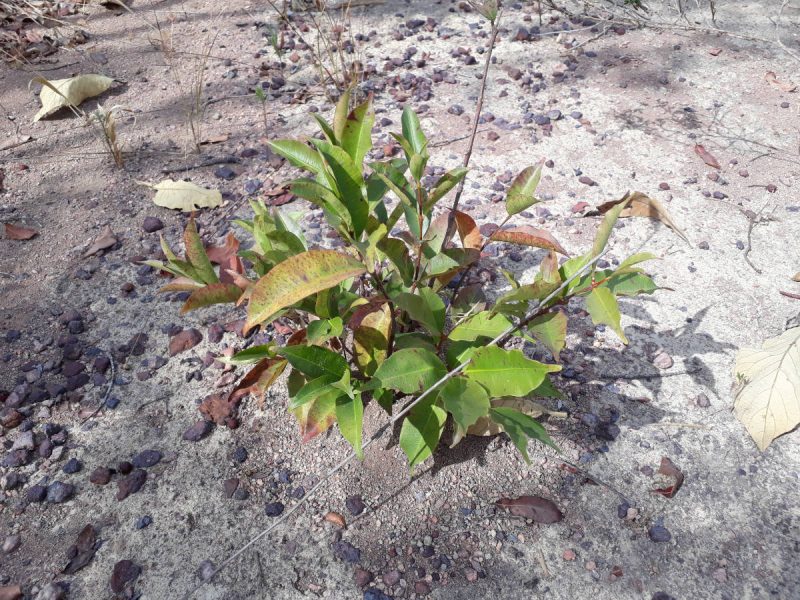
Today, mankind has at its disposal manpower and the technology known as Syntropic Farming to build the most beautiful forest gardens of all ages, the wonder of wonders. We are one step away, a little step from lost paradise. Now I understand what Ernst told me 25 years ago: “You must understand the plants.” I keep planting and dreaming about the future. The mangabas full of fruits, the flowering cashews (Anacardium occidentale), the sprouting strawberry guavas (Psidium cattleianum), the angicos (Anadenanthera falcataangels) with seeds, all planted in high density, together with agaves, jatoba (Hymenaea courbaril), Anadenanthera macrocarpa … my most promising agroforestry, without applying any thermo-phosphates, without manure, covering the soil only with the pruning of the plants, thus accelerating the succession of the species and constantly enriching the soil.
The more we understand the true role of all life around us, the more helpers we will have in our epic function to reforest the Earth. A journey capable of provoking admiration, surprise, wonder, the grandiosity of giving back to the planet its forests, putting the right seeds in the right place, without effort, without inputs, just helping the flow of what already flowed, peace farming.
Fernando Rebello is a biologist and agronomist. He is a close Ernst Götsch’s student for the past 25 years and the founder of CEPEAS – Syntropic Agriculture Research Center.




